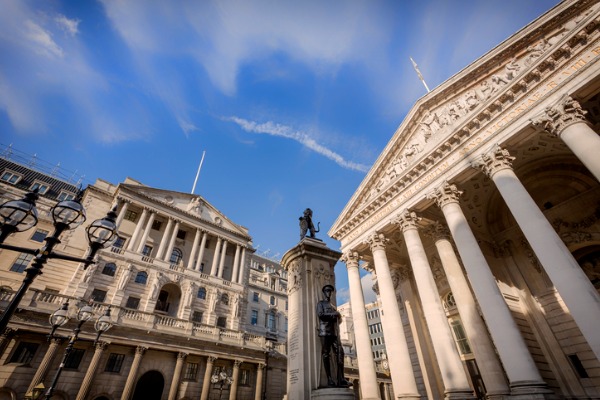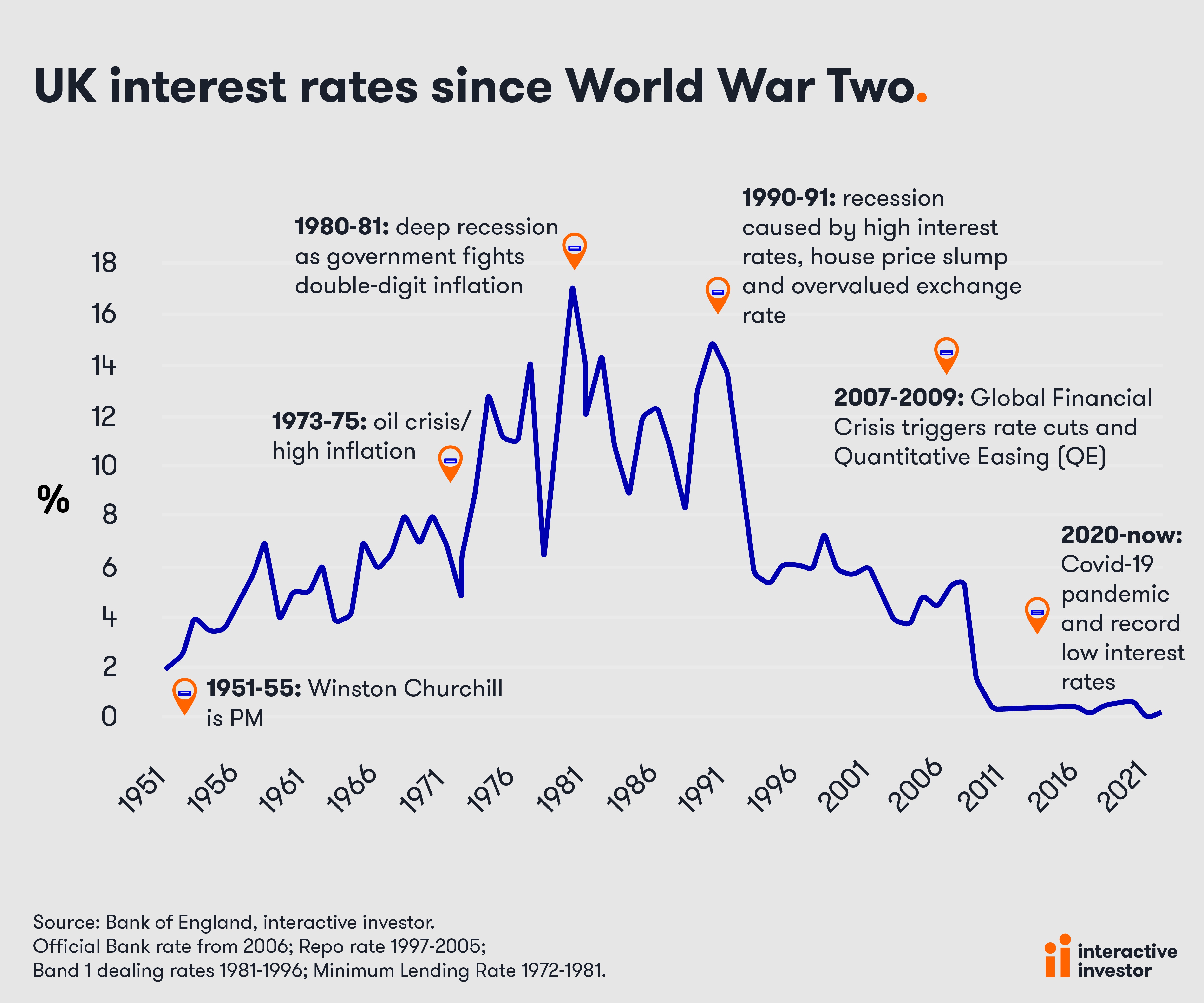Bank of England tipped to hike interest rates to joint highest since 2009
16th March 2022 13:02
by Graeme Evans from interactive investor
Inflation is at multi-decade highs and prices keep rising. Here's what the experts think will happen to interest rates when the Bank of England announces its latest policy decision on Thursday.

An expected hike in interest rates on Thursday could be followed by as many as four more in 2022 as Bank of England policymakers battle to regain control of inflation.
Tomorrow’s anticipated quarter of a percentage point rise will take the Bank’s base rate from 0.50% to 0.75%, which as our accompanying chart shows is very much still in ultra-low territory.
There’s plenty of uncertainty about where the base rate will finish the year, but economists agree that the Bank will be keen to front-load its hiking cycle given that inflation already appears destined to reach 8% in the spring. The Bank’s target for inflation is 2%.

Russia’s invasion of Ukraine has complicated the Bank’s decision-making, but at the same time it has also created more urgency to act after prices of commodities including Brent crude, wheat, aluminium and nickel all surged to record highs.
This spike in prices has raised “stagflation” fears, but economists think that inflation will be the priority for policymakers rather than protecting growth, particularly with interest rates still at historically low levels.
- Commodities shock: wild times as scarcity looms
- New video: inflation, dividends and a new commodities supercycle
- New video: Russia, Ukraine and the mining sector
Bank of America economists said: “Growth will likely be weaker as real incomes are squeezed but we think that does not let the BoE off the hook on rate hikes. We expect five hikes this year.”
Interest rates were 0.1% for almost all of last year as part of the Bank’s emergency support for the UK economy during the pandemic. December’s 0.15% increase was followed by a quarter point rise in February this year, when four of the nine-strong committee voted for an unprecedented half point increase.
The big worry for policymakers is that high inflation will feed through into significant wage growth that will feed back into inflation. There are already worrying signs on this front after figures this week showed there are now more than 600,00 fewer available workers than before the pandemic and a record number of job vacancies.
This tightening of the labour market and the feed-through from pay rises to counter the cost of living pressures meant average earnings growth in the three months to January rose to 4.8%, still barely sufficient to keep pace with inflation.
Capital Economics thinks that CPI inflation will rise from 5.5% in January to a peak of 8.3% in April, given the impact of the big jump in the Ofgem energy cap and other price hikes.
The CPI rate is set to stay above 6% for all of this year and above its 2% target until late in 2023, but the outlook is clouded by Ofgem’s October price review and the extent that the economic consequences of the Ukraine war weaken the outlook for GDP.
Capital Economics sees GDP reaching 4% this year and 2% the year after, depending on how much support is offered by Chancellor Rishi Sunak in his Spring Statement on 23 March.
The consultancy said: “Our best guess is that the Spring Statement will contain a fiscal package of about £10 billion in 2022/23 (0.5% of GDP), with around half of this aimed at easing the cost of living crisis and the rest devoted to higher defence spending.”
It added that it expects the Bank of England to increase interest rates to 1.25% by August and resume rate rises in 2023 with an eventual policy rate of 2%.
- Nine things to watch for in the chancellor’s Spring Statement 2022
- Tips from three pros on fighting inflation
- Shares, funds and trusts for your ISA in 2022
The expected rate hiking cycle will be the first experienced by many households and borrowers, given that the financial crisis in 2007-09 ushered in a period of cheap money that still exists today.
The base rate went from 5.75% in the summer of 2007 only to fall to 0.5% two years later. In 1992, rates briefly touched 15% when Britain fell out of the European Exchange Rate Mechanism.
These are similarly extraordinary times for the UK economy, given the intense volatility in a number of commodity markets. Using the gas futures curve, Investec noted recently that October’s price cap could rise to £3,238, a mammoth jump of 64% on top of April’s 54% hike.
Investec added: “Overall there is huge uncertainty over economic prospects, the outlook for inflation and indeed the extent to which wage growth responds to the surge in prices.”
However it expects Bank of England policymakers to be squarely in favour of tightening policy on Thursday , “rather than standing by and doing nothing”.
These articles are provided for information purposes only. Occasionally, an opinion about whether to buy or sell a specific investment may be provided by third parties. The content is not intended to be a personal recommendation to buy or sell any financial instrument or product, or to adopt any investment strategy as it is not provided based on an assessment of your investing knowledge and experience, your financial situation or your investment objectives. The value of your investments, and the income derived from them, may go down as well as up. You may not get back all the money that you invest. The investments referred to in this article may not be suitable for all investors, and if in doubt, an investor should seek advice from a qualified investment adviser.
Full performance can be found on the company or index summary page on the interactive investor website. Simply click on the company's or index name highlighted in the article.